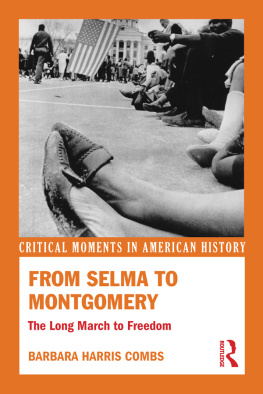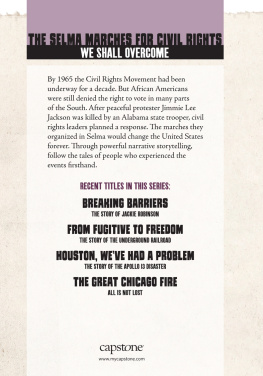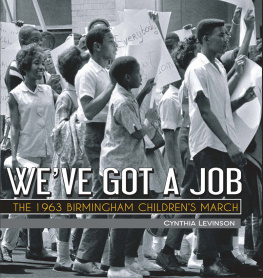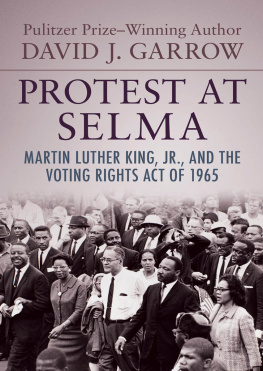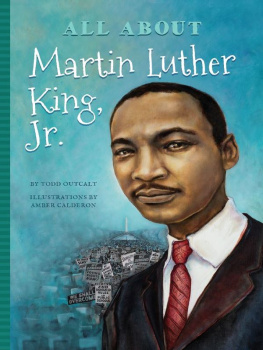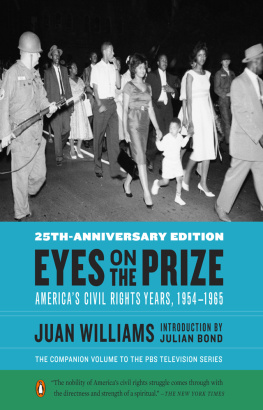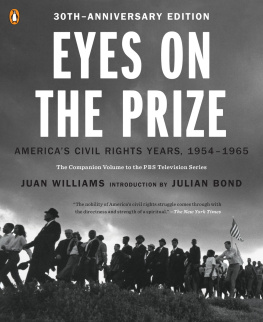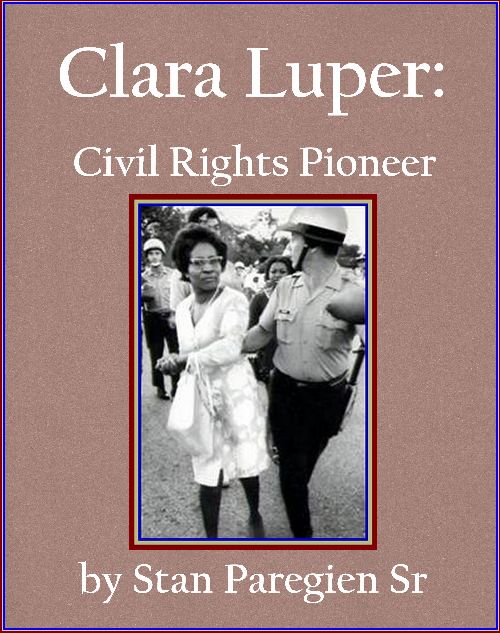
Clara Luper: Civil RightsPioneer
by Stan ParegienSr
Smashwords Edition
ISBN: 9781301688357
Copyright 2012 by Stan Paregien Sr
All Rights Reserved.
Bradenton, FL: Paregien Enterprises, 2012
Smashwords Edition, License
This ebook is licensed for your personalenjoyment only. This ebook may not be re-sold or given away toother people. If you would like to share this book with anotherperson, please purchase an additional copy for each recipient. Ifyou're reading this book and did not purchase it, or it was notpurchased for your use only, then please return to Smashwords.comand purchase your own copy.
Thank you for respecting the hard work ofthis author.

Table ofContents
Introducing ClaraLuper
Racism in HerYouth
An Educator atHeart
Racism in America
Her "FreedomCenter"
Demonstrating for CivilRights
The March onWashington
The March onSelma
The Later Years
Still Fighting theBattle
Resources
Stan Paregien's Bio &Other eBooks
Chapter 1
Introducing ClaraLuper
Most people would probablytry to hide the fact that they had been arrested not just one ortwice but 26 times. But the late civil rights leader Clara Luperwore those arrests like battle decorations.
And so they were. Only thebattle was not against an enemy nation but against the ignoranceand intolerance that fostered racial problems right here in thegood ol' USA.
Roslyn Brock, NAACPChairman, said of Luper after her death: Ms. Lupers tirelessadvocacy for equality for all, her passion for engaging the youngergeneration and her fearless nature made her one of the foremostcivil rights advocates of our time (Ken Raymond, Clara Luper:1923-2011, A true icon in the civil rights community, The Oklahoman (Friday,June 10, 2011, p. 4-A).
I met Clara Luper for thefirst and only time on August 9, 2006. She was 83 years of age. Ihad called her a week or two earlier and made an appointment tomeet her for an interview in her office at 2609 N. Martin LutherKing Avenue on the east side of Oklahoma City. That was thelocation of her beloved Freedom Center, a modest building which hadbeen her base of operations for many years.
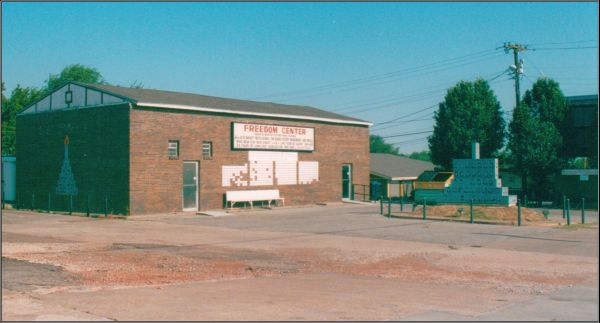
Sadly, the Freedom Center looked as though itand the parking
area were not being maintained very well. Andit has certainly
declined more since 2006.
When I arrived on that hotand sweltering August day in 2006, Mrs. Luper smiled and shook myhand firmly. She wore a casual blue pantsuit and sported beige highheels. Because I knew her age I suspected, though was not about toask, that her true hair color was not the jet black that I saw. Shesimply gave the impression that she was still concerned aboutlooking her best.
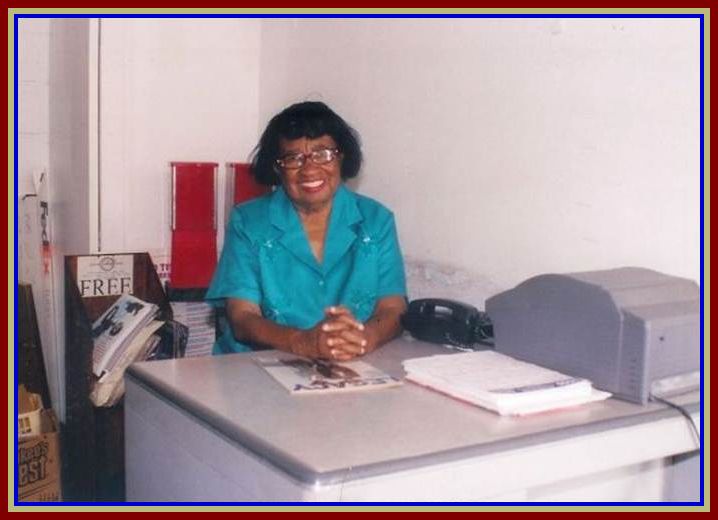
Clara Luper at her office desk in a corner ofthe Freedom Center
We sat down, she at hersmall desk in one corner of the small building measuring perhaps 30X 60 feet, and I on a chair across from her. And for the betterpart of three hours I mostly listened as she recounted her life asa civil rights pioneer in Oklahoma and a supporter of civil rightsefforts in other parts of the United States and around theworld.
After only a few minutesinto our conversation, I was convinced that this lady held deepreligious values and social beliefs that she was willing toarticulate at the drop of a hat. Her speech was strong andanimated, her pronunciation so distinct and precise as to be almosttheatrical. It was obvious that her talent in public speaking hadbeen honed by years of teaching and motivating others. I couldimagine how, fifty years ago, many lesser educated Whites andBlacks could feel intimidated or even threatened by herself-confident air. And I could see why she had been not only aninfluential educator in the Oklahoma City public school system buta pioneer spokesperson for equal rights for all people.
This, then, is herremarkable story of faith and courage.
Chapter 2
Racism in HerYouth
Clara Shepard was born onMay 3, 1923 in Okfuskee County, Oklahoma. Her parents weredirt-poor share croppers with a total of five children. My ownparents grew up in their respective families during that sameperiod. They, like Clara, were children of dirt-poor share croppers(only in Johnston County, Oklahoma). Neither my mothers parentsnor my fathers parents had more than a few dollars to their nameuntil decades later. They did have one advantage over Clara Shepardand her parents: my parents and theirs were white. And that made ahuge difference in those days.
For example, my parentsattended the normal public elementary schools in Coleman, Wapanuckaand the Enterprise community just southwest of Wapy. About thesame time young Clara Shepard had to attend a segregated (allBlack) elementary school in Hoffman, Oklahoma. She graduated fromGrayson High School.
Mrs. Luper became verysolemn as she touched upon one of her early experiences ofdiscrimination. She softly told me, One of my little brothers gotvery sick. So my parents took him to the only doctor in Henryetta,Oklahoma. But the doctor refused to examine him because he wasBlack. And he died shortly after that.
Welcome to what segregationreally meant in Oklahoma and most other southern and mid-westernstates back then.
Well, Clara grew up andmarried Bert Luper at Durant, Oklahoma. Clara and Bert had threechildren-- Calvin, Marilyn, and Chelle.
After Mr. Lupers death,she married Mr. Wilkerson.
She graduated from asegregated Black college, Langston University (Langston, Oklahoma)with the B.A. degree in math and a minor in history. That was in1944. She was the very first person in her family to graduate fromcollege, and she always considered that educational attainment asher greatest personal achievement. However, she did go on and earnher masters degree from the University of Oklahoma. And uponenrolling there she became the very first Black person to declare amajor in OUs history department.
Chapter 3
An Educator atHeart
Mrs. Lupers first jobafter graduation was teaching at a Black school for orphans, deafand blind students. That was at the all-Black town of Taft,Oklahoma. She also taught school in Pawnee, Oklahoma.
But her longest tenure andgreatest impact was at the segregated Dunjee High School inOklahoma City and, later, at John Marshall High School. She taughthistory, Human Relations, math and social studies. And, just asimportant, she instilled in them a sense of worth and a confidencethat they could go out and change society for thebetter.
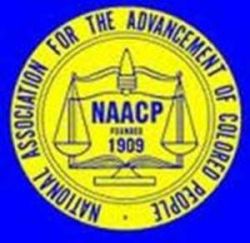
NAACP logo
Along the way sometime inthe 1950s she established a local Youth Council for the NationalAssociation for the Advancement of Colored People (NAACP), and sheserved as the advisor of that group for an astounded 50 years. Shefinally retired from teaching in 1991, after 41 years as aneducator and motivator of Black students.
Next page

